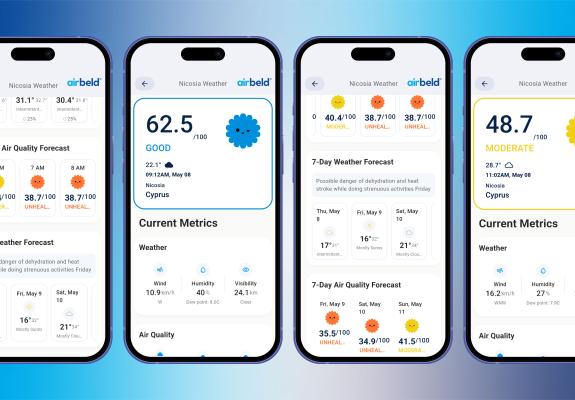The Art Of Storytelling: The Heartbeat of Modern Branding And Advertising
How Modern Brands Use Stories to Build Lasting Bonds
In an era where consumer’s days are saturated with countless brands vying for attention, the ancient art of storytelling has emerged as the most potent weapon in a marketer's arsenal. Storytelling creates a compelling alchemy that transforms simple messages about products, into profound narratives, weaving together the values, aspirations, and experiences that define a brand's essence in a way that deeply resonates with the audience. This approach, far from being a mere marketing tactic, has evolved into a critical strategic asset in the toolbox of savvy marketers and brand custodians. Through a blend of creativity, emotion, and authenticity, storytelling in advertising has the power to elevate a brand from a commodity to a cherished part of consumers' lives.
At its core, storytelling in advertising is about forging a connection. It's about creating a narrative so compelling that it invites the audience into a world where they can see themselves, where their hopes, dreams, and desires are not just understood but celebrated. This connection is crucial in today's fast-paced world, where attention is the new currency. Brands that master storytelling don't just capture attention; they captivate hearts and minds.
At its core, storytelling in advertising is about forging a connection.
Take, for example, the iconic campaigns by Apple, a brand that mastered the art of storytelling to carve its niche in the tech world. Their marketing doesn’t focus on the technical specifications of their products but rather on the story of innovation, of thinking differently, of challenging the status quo, and of the human experience enhanced by technology. Their advertising campaigns, such as the groundbreaking "1984" commercial or the touching "Shot on iPhone" series, are not just about selling products. They’re about sharing a vision, a dream of a more innovative, connected, and creative world, inviting consumers to join a movement, a new way of life. This approach has not only solidified Apple's place in the market but has also cultivated a loyal community of users who see Apple products as extensions of their identity.
Similarly, Nike's "Just Do It" slogan goes beyond advertising, encapsulating a story of perseverance, ambition, and the relentless pursuit of excellence. Through powerful storytelling, Nike inspires a sense of belonging, a community of athletes and dreamers united by a shared ethos. This narrative prowess turns customers into loyal followers, and products into symbols of personal achievement and identity.
In the world of non-profits, consider the storytelling approach of charity: water. By sharing individual stories of people affected by water scarcity, charity: water does more than just raise funds; it builds a deeply personal connection with its audience. These stories of struggle and triumph humanize the issue, making it relatable and prompting a powerful emotional response that drives action. It's a testament to how storytelling can amplify impact, turning supporters into advocates for a cause.
When it comes to our local market, consider the most recent Bank of Cyprus 125 years commercial. By diving deeply into the Bank of Cyprus archive, we, at DELEMA, were able to uncover key moments where the values of the institution were brought to life; values like its ambition, thirst for innovation, pioneering legacy and working tirelessly for the betterment of the community. These moments were then woven together in a narrative that aligns with the Bank’s forward-thinking and aspirational character.
What these examples underscore is the transformative power of storytelling in creating brands that are not just seen or heard but felt and remembered. In today's cluttered advertising landscape, where consumers are bombarded with countless messages, the brands that tell the most authentic, engaging, and meaningful stories are the ones that stand out. They're the ones that forge emotional connections, inspire loyalty, and drive action.
Moreover, storytelling in advertising is evolving with the rise of social media and content marketing. Brands now have the opportunity to tell their stories across multiple platforms, using a mix of text, images, and videos to engage with their audience in a more dynamic and interactive way. This multimedia approach to storytelling allows brands to weave richer, more nuanced narratives that can be tailored to different audiences, making the brand experience more personal and impactful. As we look to the future, the importance of storytelling in branding and advertising will only grow. With advancements in technology, such as augmented reality, virtual reality and AI, brands will have new tools to tell their stories in even more immersive and engaging ways. But no matter the medium, the purpose of storytelling will remain the same: to connect, to resonate, and to inspire.
However, the power of storytelling comes with a responsibility. In a world where consumers are increasingly looking for authenticity and purpose in the brands they support, the stories we tell must not only entertain but also embody the true values and mission of the brand and create an impact. This authenticity is the cornerstone of trust between a brand and its audience. When a brand's story aligns with its actions, it builds a strong, loyal relationship with its consumers.
In conclusion, storytelling is not just a tactic in advertising; it's a fundamental human experience. It's how we make sense of the world and our place in it. For brands, mastering the art of storytelling is not just about selling products; it's about creating a legacy. It's about crafting narratives that endure, that move people, and that ultimately define the brand in the hearts and minds of its audience. At DELEMA, we make the most of the power of storytelling to ensure that even in the bustling marketplace of the digital age, our brands tell the most compelling stories and thrive. So, tell a story worth remembering, and the world will listen.






